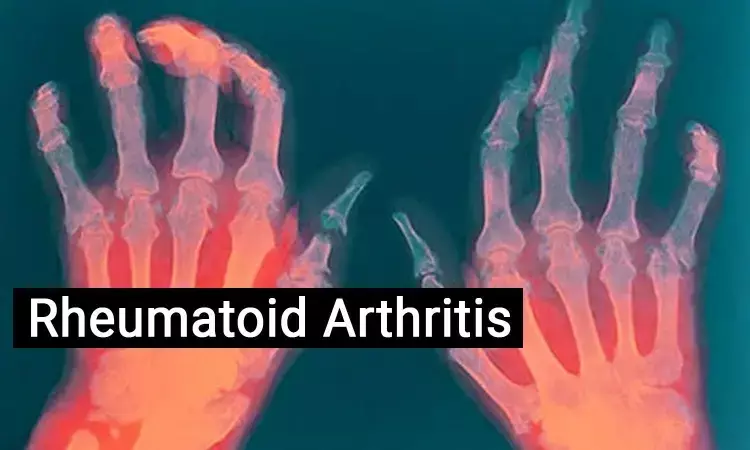- Home
- Medical news & Guidelines
- Anesthesiology
- Cardiology and CTVS
- Critical Care
- Dentistry
- Dermatology
- Diabetes and Endocrinology
- ENT
- Gastroenterology
- Medicine
- Nephrology
- Neurology
- Obstretics-Gynaecology
- Oncology
- Ophthalmology
- Orthopaedics
- Pediatrics-Neonatology
- Psychiatry
- Pulmonology
- Radiology
- Surgery
- Urology
- Laboratory Medicine
- Diet
- Nursing
- Paramedical
- Physiotherapy
- Health news
- Fact Check
- Bone Health Fact Check
- Brain Health Fact Check
- Cancer Related Fact Check
- Child Care Fact Check
- Dental and oral health fact check
- Diabetes and metabolic health fact check
- Diet and Nutrition Fact Check
- Eye and ENT Care Fact Check
- Fitness fact check
- Gut health fact check
- Heart health fact check
- Kidney health fact check
- Medical education fact check
- Men's health fact check
- Respiratory fact check
- Skin and hair care fact check
- Vaccine and Immunization fact check
- Women's health fact check
- AYUSH
- State News
- Andaman and Nicobar Islands
- Andhra Pradesh
- Arunachal Pradesh
- Assam
- Bihar
- Chandigarh
- Chattisgarh
- Dadra and Nagar Haveli
- Daman and Diu
- Delhi
- Goa
- Gujarat
- Haryana
- Himachal Pradesh
- Jammu & Kashmir
- Jharkhand
- Karnataka
- Kerala
- Ladakh
- Lakshadweep
- Madhya Pradesh
- Maharashtra
- Manipur
- Meghalaya
- Mizoram
- Nagaland
- Odisha
- Puducherry
- Punjab
- Rajasthan
- Sikkim
- Tamil Nadu
- Telangana
- Tripura
- Uttar Pradesh
- Uttrakhand
- West Bengal
- Medical Education
- Industry
PET/CT imaging can predict treatment response in early rheumatoid arthritis: Study

Netherlands: A recent study stated that in rheumatoid arthritis (RA), PET imaging of immune cells involved in bone and joint damage can predict which patients will respond early to treatment. The findings of the study, published in the BMJ journal Rheumatic and Musculoskeletal Diseases, imply that early assessment of clinical response through macrophage PET imaging use could potentially improve the efficacy of treatment in patients with early RA.
PET imaging of the feet joints following 2 weeks of treatment corresponds significantly to clinical response after 3 months of treatment. This contributes independently from the Disease Activity Score of 44 joints score (DAS44) at 2 weeks to the prediction of the clinical response at 3 months.
Rheumatoid arthritis is an autoimmune disease that affects the synovial joints and causes chronic inflammation, which leads to bone and cartilage damage. Positron emission tomography (PET) is a non-invasive nuclear imaging technique with high sensitivity and through the use of specific tracers has the potential of high specificity.
There is an urgent need for new tools to evaluate treatment response in patients with early RA and PET has shown potential for predicting clinical response at an early stage in the treatment of patients with RA.
Against the above background, Nicki Verweij, Amsterdam UMC Locatie VUmc, Amsterdam, The Netherlands, and colleagues aimed to determine whether macrophage PET/CT imaging using (R)-[11C]PK11195 at 0 and 2 weeks are associated with the clinical response at 13 weeks in patients with early RA.
For this purpose, the researchers performed whole-body (R)-[11C]PK11195 PET/CT scans at baseline and after 2 weeks of COBRA-light (combination therapy of methotrexate and prednisone) treatment in 35 patients having clinically active early RA. Clinical assessment (DAS44) was performed at 0, 2, and 13 weeks of treatment.
Two blinded, experienced readers visually assessed PET/CT scans. The assessment was also done by calculating standardized uptake values (SUVs) for elbows, shoulders, hips, knees, and hand and feet joints.
The study showed the following findings:
- 18 males and 17 females were included (baseline DAS44=3.2 ± 1.0).
- 171 out of 1470 joints were visually PET-positive at baseline, decreasing to 100 joints after 2 weeks.
- In general, small feet joints showed the highest uptake at baseline, and the largest decrease after 2 weeks (Δ0-2).
- Neither baseline nor Δ0-2 PET measures correlated with DAS44 at 13 weeks.
- However, at 2 weeks, the average SUV of the feet significantly correlated with DAS44 at 13 weeks (R2=0.14).
- In a multivariable model, DAS44 and the average SUV of the feet at 2 weeks showed substantial combined predictive value (combined R2=0.297).
"Our findings showed that quantitative macrophage PET assessment of feet joints, together with DAS44, after 2 weeks of COBRA light treatment in patients with early RA corresponds with a clinical response after 3 months of treatment," the authors concluded.
Reference:
Verweij N, Zwezerijnen G, ter Wee M, et alEarly prediction of treatment response in rheumatoid arthritis by quantitative macrophage PETRMD Open 2022;8:e002108. doi: 10.1136/rmdopen-2021-002108
Dr Kamal Kant Kohli-MBBS, DTCD- a chest specialist with more than 30 years of practice and a flair for writing clinical articles, Dr Kamal Kant Kohli joined Medical Dialogues as a Chief Editor of Medical News. Besides writing articles, as an editor, he proofreads and verifies all the medical content published on Medical Dialogues including those coming from journals, studies,medical conferences,guidelines etc. Email: drkohli@medicaldialogues.in. Contact no. 011-43720751


